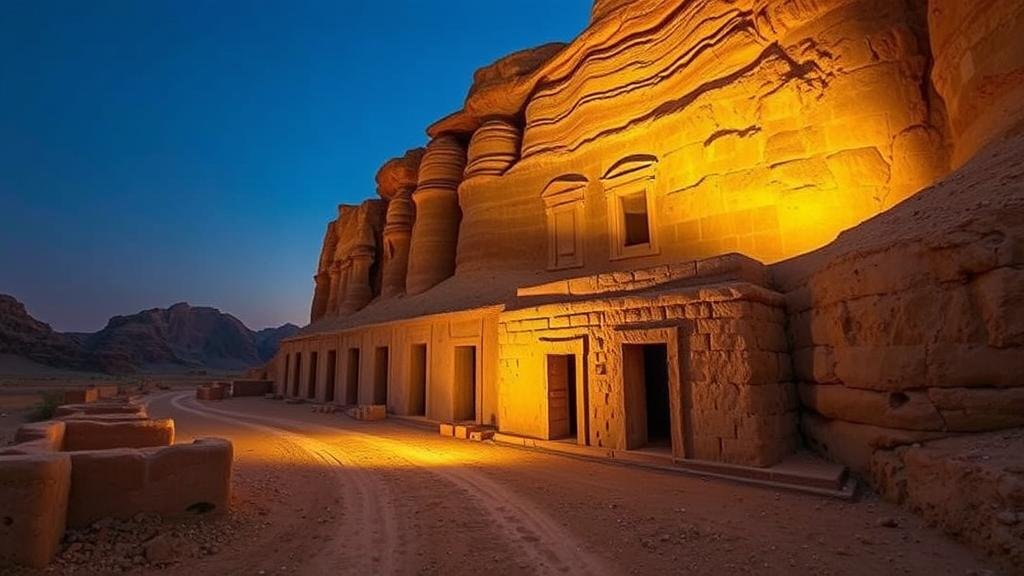Following Silk Road paths to rediscover ancient cities buried under centuries of desertification.
Following Silk Road Paths to Rediscover Ancient Cities Buried Under Centuries of Desertification
The Silk Road, a network of trade routes established during the Han Dynasty in around 130 BCE, served as a vital artery for commerce and cultural exchange between the East and West. As these routes facilitated the movement of goods, ideas, and cultures, they also led to the emergence of numerous cities, some of which have since succumbed to the relentless forces of desertification. Today, archaeologists and explorers are striving to uncover these ancient urban centers, revealing their histories and teachings. This article embarks on a journey along the Silk Road, exploring the methods and significance of rediscovering lost cities buried beneath shifting sands.
The Historical Importance of the Silk Road
The Silk Road spanned over 4,000 miles, connecting major civilizations, including China, Persia, and Europe. Its influence reached peak prominence during its early centuries and has continued to resonate through time. It facilitated the exchange of not only goods like silk, spices, and precious metals but also cultural treasures including art, science, and philosophy. Cities such as Samarkand, Bukhara, and Kashgar flourished as critical hubs of commerce and cultural activity.
Forgotten Cities of the Silk Road
Much of the history tied to the Silk Road is hidden beneath layers of sand and sediment due to centuries of climate change and desertification. Notable ancient cities lost to these environmental changes include:
- Palmyra (Syria): Once a thriving metropolis and a key trading post, Palmyra boasts remarkable ruins that reflect its wealth and cultural heritage.
- Merv (Turkmenistan): Renowned for its architectural marvels, Merv was a flourishing center of trade and learning.
- Chorasmia (Uzbekistan and Kazakhstan): This historic region was critical for the flow of goods and cultural interchange before environmental changes relegated it to history.
The Role of Archaeology in Rediscovering Ancient Cities
Modern archaeological techniques play a crucial role in unveiling the remnants of Silk Road cities. Techniques include:
- Remote Sensing: Satellites and aerial photography help identify sites that are otherwise invisible due to desert landscapes.
- Ground-Penetrating Radar (GPR): This technology reveals hidden structures beneath the surface, allowing archaeologists to map urban layouts.
- Geographical Information Systems (GIS): GIS assists researchers in analyzing spatial data, revealing patterns of urban development and trade routes.
These methodologies combined create a layered understanding of ancient urbanization, showcasing how desert environments both shaped and sheltered these cities through the millennia.
The Impact of Desertification on These Cities
Desertification, primarily driven by climate change and human activity, has had profound effects on ancient Silk Road cities. As temperatures rise and precipitation patterns shift, the process can lead to the loss of arable land, water scarcity, and the entombing of cities under vast sand dunes. For example, research by the United Nations Convention to Combat Desertification (UNCCD) estimates that land degradation affects over 1.5 billion people worldwide, exacerbating food insecurity and leading to mass migrations.
Real-World Applications and Significance
The effort to rediscover these lost cities is not merely an academic exercise; it has practical implications for contemporary societies. Understanding how past urban centers coped with desertification may yield valuable lessons on sustainable development and climate resilience. For example:
- Water Management Techniques: Ancient civilizations often developed innovative irrigation systems. Learning from these techniques can improve modern water conservation efforts in arid regions.
- Cultural Heritage Tourism: Unearthing ancient sites can stimulate local economies, encouraging tourism that celebrates history and culture while providing financial means for conservation efforts.
Actionable Takeaways
Rediscovering the lost cities of the Silk Road provides insights not only into our past but also into potential solutions for the challenges faced by contemporary societies. Here are some steps that individuals and organizations can take:
- Support archaeological research initiatives to uncover lost histories.
- Advocate for policies aimed at combating desertification and promoting sustainable land management practices.
- Engage in and promote cultural heritage tourism, enhancing local economies while preserving ancient sites.
To wrap up, the pursuit of forgotten cities along the Silk Road offers invaluable knowledge and inspires action towards sustainability and heritage preservation. As we follow these ancient paths, we not only rediscover our history but also seek pathways for future resilience.



